It’s always something…I’m sitting here at 1 a.m. waiting to hear if we need to evacuate due to potential flooding from a broken dam upstream. I have no idea whether I’ll be working tomorrow (today) so thanks in advance for your patience!
~~~
I recently noticed this door in the new fancy grocery store in town. I’ve seen these plastic tabs to deter egress before, but I’ve never found any specifics on them – for example, a limit on how much force it takes to break them in order to exit. Does anyone have experience they can share here? I’m also wondering how long it will take before someone throws a padlock through those holes.
You need to login or register to bookmark/favorite this content.

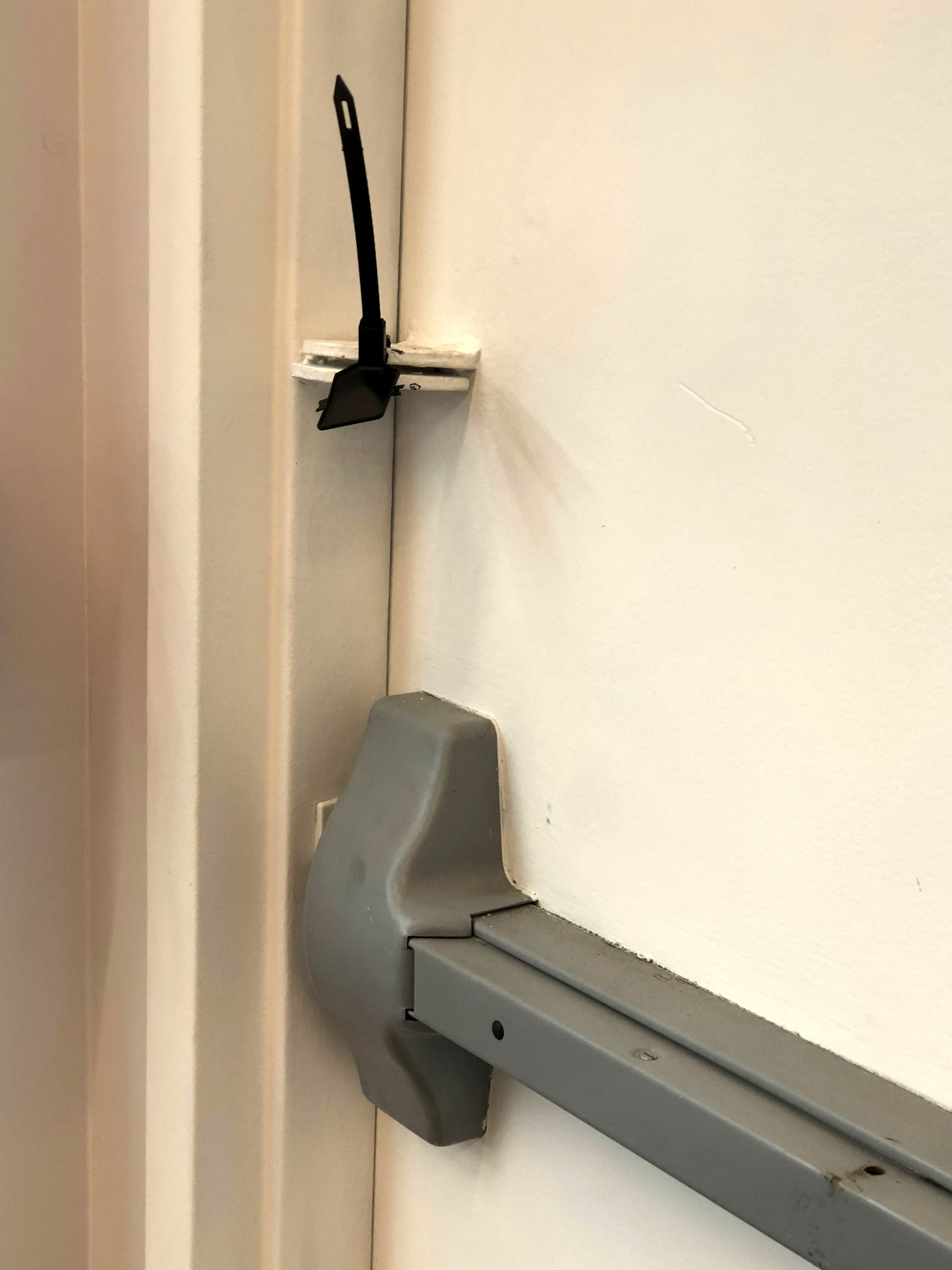
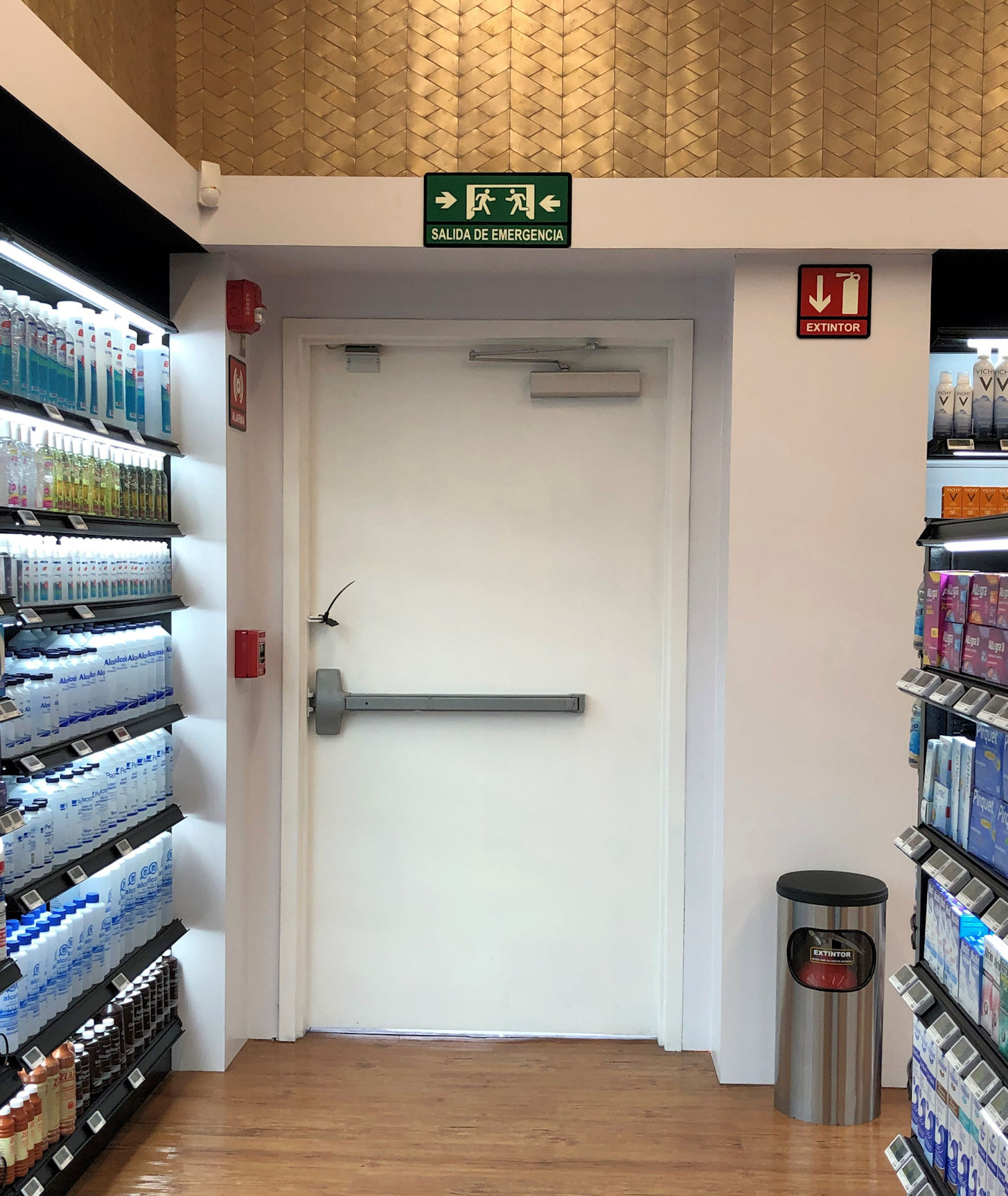

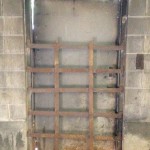

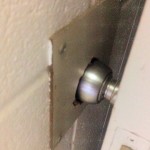
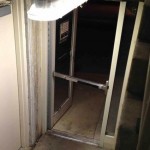




Not only could a well-meaning janitor or other store staffperson throw a padlock on there, but so could someone planning a robbery or other attack… Putting that kind of option there at all seems incredibly dangerous!
I’m guessing that tab is an anti-shoplifting measure, but wouldn’t an alarmed bar or a floor employee “stationed” in that area be a much safer idea?
That is also a field modification on those tabs.
I’m guessing this isn’t a fire door – I think it opens to the exterior. Of course, I couldn’t check. 🙂
– Lori
Great way to have a visual certification that the door has not been opened, but most of these Zip Ties require more than 30 lbs of force to break, so they would not meet the Fire Code.
Just another person bypassing the fire code to save the cost of a Panic Bar equipped with a Delayed Egress of Alarm package, also probably using a Pad-Lock to Secure the Door after hours….
I actually noticed these a lot in England and Ireland. Interested to hear the response…
WOW! DID YOU ALSO NOTICE THE HOLE DRILLED INTO THE PUSH BAR? DISASTER WAITING TO HAPPEN.
Mighty hefty zip-tie.
I think I know what they’re trying to do, but DANG, how strong must you be to break the zip-tie?
I think the bolt or padlock they put in the hole in the push bar to disable the push bar is more of a problem.
For fire extinguishers
NFPA says they have to be “listed”
7.3.2.2.1
After the applicable maintenance procedures are completed, a new listed tamper seal shall be installed.
Cannot find in NFPA 10 what the maximum force allowed is.
Some web sites say five pounds.
I am guessing there is nothing in NFPA 80 about tamper seals.
To me, should be less than the allowed force to open a door.
These are seals typically used on trucks, valves, gates and other items. I have seen these many times; and they are very effective. They are called “tamper evident seals” and they come in all sizes and varieties. Seals are a good way to ensure staff does not use the door while maintaining egress availability. I don’t know about this one however, I usually use a paper seal with a unique number that is recorded and regularly inspected. Here are some examples. https://seals.com/tamper-evident-security-seals/
Thanks Jim!
– Lori
Sometimes the path of least resistance is to notify the fire department since their core business is saving lives. Talking with a store manager or owner can be futile because their business is about selling stuff and minimizing theft, so safety might not be a priority to them until they are the target of an injury lawsuit.
Delayed egress in a Mercantile Occupancy might be an option if the building complies with IBC Chapters 9 and 10, but the more common threat in a grocery store appears to be a gun or a readily available knife in frustration-free packaging from a store shelf, not fire. Employees would need to know to use a fire alarm pull station to immediately unlock the doors, but shoplifters might already know that. So then what does a hardware specifier suggest to a merchant or to an architect designing a store?
Also, what sort of moral, ethical, or legal responsibility does a person or organization hold by submitting, publishing, or discussing a code violation without any remedial action if that violation causes death or injury?
Sort of like a exit alarm. Let’s you know when someone left that wasn’t supposed to.
I recall the difficulty our nursing staff had breaking the seal plastic pin retainer during my weekly fire extinguisher training and those seals were flimsy by comparison. I had to teach them to twist the pin ring so the extra leverage would help them actuate the extinguisher. This plastic looks much heavier and does not seem to be designed to break.
I would say to the representatime of the business: “Show me how you open the door.”
I agree, the one on the grocery store door does seem pretty beefy.
– Lori
I note flodoing from a dam in Tula, Hildago,. Affected 30,000. Hopefully, you were not among those affected.
Hi Jerry –
No, I’m in a different state.
– Lori
A delayed egress mag lock would be a great solution for this situation. A local chain had the same problem of people running out the back of the store doors, then they installed the delayed maglock. With the delay and the local alarm it detoured the theft greatly. Check with your local AHJ to see if they would be able to used on an emergency exit door.